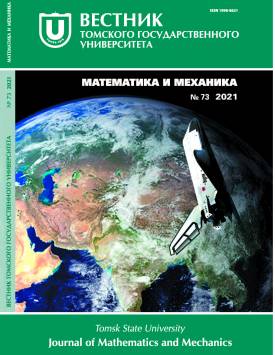Influence of the consumable electrode rotation during electroslag remelting on hydrodynamics of a slag bath
Slag melt is a current-carrying medium with intense currents induced by gravitational and electromagnetic forces. The remelted electrode rotation leads to a change in hydrodynamic processes proceeding in a slag bath of the ESR installation and associated primarily with the occurrence of a centrifugal force. The flow pattern, which is developed in the slag bath under this force action, is different from that developed at a stationary consumable electrode. A mathematical model is proposed to assess the impact of consumable electrode rotation on hydrodynamics in a slag bath during electroslag melting. A computer program is created to determine the projections of the flow velocities for a liquid flux near a rotating electrode, the moment of its hydraulic resistance, and the renewal time for the slag bath while being stirred. The critical speed of the rotation of the electrode is determined as a function of its diameter at a transitional flow regime for ANF-6 flux. The dependence of the flux flow velocity on the electrode rotation speed is presented. The moment of the rotating electrode resistance in a slag bath is determined at various electrode diameters and various depths of the electrode immersion into the slag. An expression is proposed for estimating the time of the slag bath renewal. It is also shown that at a small depth in the bath due to its intensive mixing under the action of centrifugal forces, the temperature and chemical composition over the slag bath volume during the ESR process can be considered as constant. The ratio of centrifugal and electromagnetic forces is estimated. The results determine a flow pattern of the liquid slag and the conditions under which the hydrodynamics in the slag bath is governed by centrifugal forces.
Keywords
electroslag remelting, rotatable remelting electrode, hydrodynamics of a slag bath, flow pattern, centrifugal force, electromagnetic forceAuthors
| Name | Organization | |
| Chumanov Ilya V. | South Ural State University | chumanoviv@susu.ru |
| Yachikov Igor' M. | South Ural State University | jachikov@mail.ru |
| Yachikov Matvey I. | Baltic Federal University | jachikov@mail.ru |
| Matveeva Mariya A. | South Ural State University | matveevama@susu.ru |
| Sergeev Dmitriy V. | South Ural State University | sergeevdv@susu.ru |
References

Influence of the consumable electrode rotation during electroslag remelting on hydrodynamics of a slag bath | Vestnik Tomskogo gosudarstvennogo universiteta. Matematika i mekhanika – Tomsk State University Journal of Mathematics and Mechanics. 2021. № 73. DOI: 10.17223/19988621/73/11
